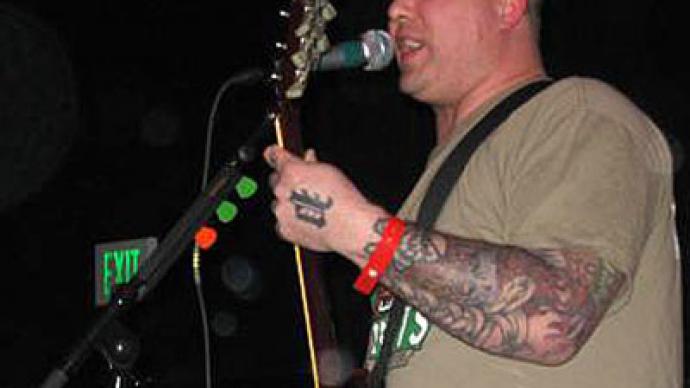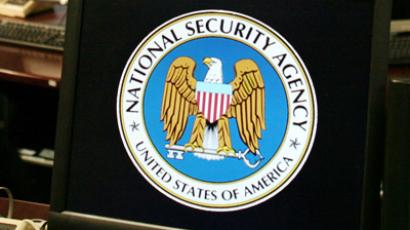Nazi extremists infiltrate US military

Suspected Sikh temple shooter Wade Page served in the US military and also identified himself as a white nationalist. He wasn’t alone, though — violent extremists are believed to be doing a large chunk of their training under Uncle Sam’s command.
Although the man authorities believe was single-handedly responsible for the shooting that left six people dead is thought to have taken his life during the August 5 massacre near Milwaukee, an unknown number of other veterans with extremist attitudes may still be planning and plotting hate crimes across the country. Page, 40, was not the only servicemen — active or retired — who identified with organizations and clans considered extremist by the US military. And although federal investigators are no doubt trying to prevent another shooting from scarring America, the number of extremists who have learned their way around weapons thanks to the best training the government can buy is anyone’s guess. The Pentagon is well aware that the military has both been infiltrated by extremist groups and has served as a breeding ground for others to join after their Armed Forces tenure is over. That doesn’t mean, though, that they’ve found a way to reverse either of those trends."We don't really think this is a huge problem, at Bragg, and across the Army," Colonel Kevin Arata, a spokesman for Fort Bragg, tells Reuters in a report the newswire published this week. "In my 26 years in the Army, I've never seen it.”The FBI, on the other hand, has openly acknowledged that gangs of all sorts have infiltrated the military. In the Federal Bureau of Investigation’s 2011 National Gang Threat Assessment report, the agency writes, “Gangs encourage members, associates and relatives to obtain law enforcement, judiciary or legal employment in order to gather information on rival gangs and law enforcement operations.”“Gang infiltration of the military continues to pose a significant criminal threat, as members of at least 53 gangs have been identified on both domestic and international military installations,” the report continues. “Gang members who learn advanced weaponry and combat techniques in the military are at risk of employing these skills on the street when they return to their communities.”Elsewhere in their assessment, the FBI acknowledges white supremacist groups interact with prison gangs and street gangs alike. Other connections between the Armed Forces and extremist groups have been analyzed as well, including a report now six-year-old that was first published by the Southern Poverty Law Center, who has been actively tracking hate groups since the 1970s.In a 2006 Intelligence Report from the SPLC, Senior Fellow Mark Potok writes that even then the military had made steps to stop extremists from infiltrating their ranks for decades. “Facing intense pressure to meet manpower goals in Iraq and Afghanistan,” though, Potok says, “some commanders and recruiters have relaxed the standards” that the military had tried to impose earlier. “As reported in a remarkable cover story by David Holthouse, many neo-Nazis have served or are serving in Iraq,” the report continues. “Hundreds anonymously proclaim their ideology in racist online venues. At a single base, Fort Lewis, Wash., 320 soldiers are involved in extremist activity, according to a Defense Department investigator – but just two of them have been discharged.”Six years after the SPLC report, Reuters says that there is still a very real number of extremists inside the Armed Forces. Although a Pentagon spokesperson assures the outlet, "Our standards have not changed; participation in extremist activities has never been tolerated and is punishable under the Uniformed Code of Military Justice,” others testify that the existence of white supremacists and other extremists is far more rampant than thought."What's scary about Page is that he served in the 1990s when putatively this was being treated quite seriously by the military. There's plenty of other Pages who served during the war on terror, and we don't know what they're going to be doing over the next decade or so," author Matt Kennard tells Reuters.And although he claims to be reformed today, Marine Corps veteran T.J. Leyden tells Reuters that the motivations for his enlistment were obvious. "I went into the Marine Corps for one specific reason: I would learn how shoot," Leyden tells Reuters. "I also learned how to use C-4 (explosives), blow things up. I took all my military skills and said I could use these to train other people.”Leyden says his white supremacist days are over and now even serves as a consultant for the anti-Nazi Simon Wiesenthal Center. As ideologies openly spread at boot camps and training grounds — the same places where young Americans are instructed how shoot, snipe and scorch to nothing — only when the threat is eliminated completely will the country know for sure that there won’t be another Wade Page ready to attack.














